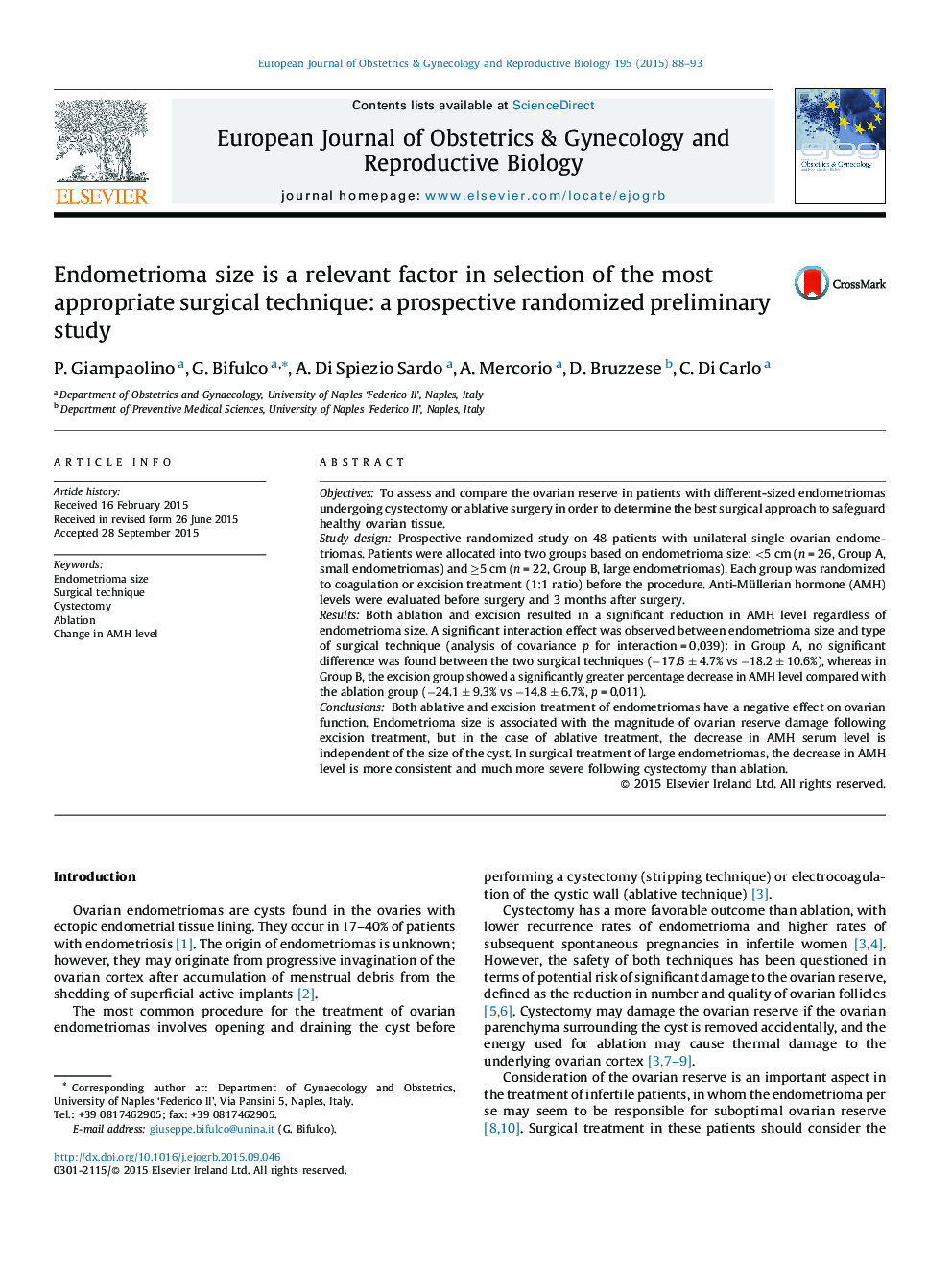| Article ID | Journal | Published Year | Pages | File Type |
|---|---|---|---|---|
| 3919562 | European Journal of Obstetrics & Gynecology and Reproductive Biology | 2015 | 6 Pages |
ObjectivesTo assess and compare the ovarian reserve in patients with different-sized endometriomas undergoing cystectomy or ablative surgery in order to determine the best surgical approach to safeguard healthy ovarian tissue.Study designProspective randomized study on 48 patients with unilateral single ovarian endometriomas. Patients were allocated into two groups based on endometrioma size: <5 cm (n = 26, Group A, small endometriomas) and ≥5 cm (n = 22, Group B, large endometriomas). Each group was randomized to coagulation or excision treatment (1:1 ratio) before the procedure. Anti-Müllerian hormone (AMH) levels were evaluated before surgery and 3 months after surgery.ResultsBoth ablation and excision resulted in a significant reduction in AMH level regardless of endometrioma size. A significant interaction effect was observed between endometrioma size and type of surgical technique (analysis of covariance p for interaction = 0.039): in Group A, no significant difference was found between the two surgical techniques (−17.6 ± 4.7% vs −18.2 ± 10.6%), whereas in Group B, the excision group showed a significantly greater percentage decrease in AMH level compared with the ablation group (−24.1 ± 9.3% vs −14.8 ± 6.7%, p = 0.011).ConclusionsBoth ablative and excision treatment of endometriomas have a negative effect on ovarian function. Endometrioma size is associated with the magnitude of ovarian reserve damage following excision treatment, but in the case of ablative treatment, the decrease in AMH serum level is independent of the size of the cyst. In surgical treatment of large endometriomas, the decrease in AMH level is more consistent and much more severe following cystectomy than ablation.
